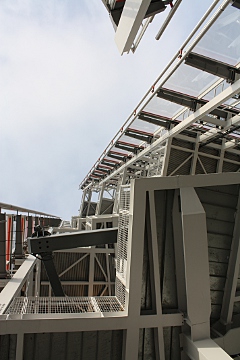London is famed for its low-rise city scape, with traditionally just Wren’s St Paul’s Cathedral sat aloft above the capital.
Popular on LondonNet
Piece by piece, post-war London has chipped away at that vista with a series of ever taller buildings, the sixties saw Centrepoint (385 feet, 117metres) and the Post Office Tower (581ft, 177m). They were joined by The Nat West Tower in 1980 (600ft, 183m) and the Canary Wharf Tower (770ft, 235m) in Docklands. Unlike St Paul’s, their names have often proved ephemeral (save the unloved and over-maligned Centrepoint). In part that’s due to naming them after the building’s first occupants or alternatively after little known postal addresses. Canary Wharf Tower was always called One Canada Square by postal pedants everywhere and The Gherkin, 30 St Mary Axe.
Last week, we caught a glimpse of the latest big-boy to break through the skyline. Towering above the rest at 1,016 feet (310m), The Shard has the advantage of bearing a non-commercial name from the start and a stature so dominant that its postcode will never be its name. I’d like to think that that’s thanks in part to architect Renzo Piano’s intent to make this a people’s building from the start. Aside from boasting levels of restaurants and hotels it is the first tower in many years to feature a public viewing gallery at its peak. Londoners will put this faith to the test when The View From The Shard opens in February, with the first days already sold out.
And yet just when it seemed Londoners might be finally about to embrace a high-rise future, yesterday we saw the limitations of this vision. When a helicopter crashed into St George’s Wharf Tower in Vauxhall killing both its pilot and a passer-by down below we collectively choked a little and will no doubt now have a rethink about how our city can live with buildings that reach ever higher up into the clouds.
Peter Clee
More:
The View From The Shard – Our review of London’s towering new attraction









